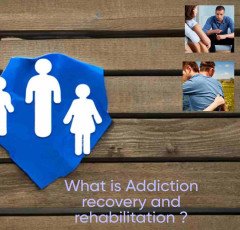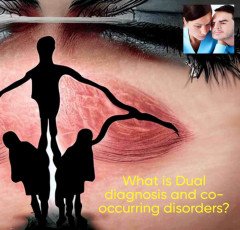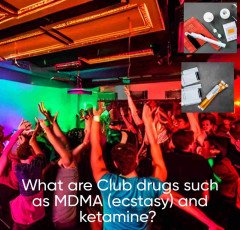
What is Harm reduction strategies ?

Harm reduction is a set of doable tactics and concepts designed to lessen the negative effects connected to drug use and other high-risk behaviors.
In spite of efforts to prevent it, some people will still use drugs or engage in other risky activities. Harm reduction acknowledges this and works to reduce any potential harm.
The use of naloxone to reverse opioid overdoses, the distribution of clean needles to stop the spread of diseases like HIV and Hepatitis C among injection drug users, the provision of education on safe sex practices, and the availability of medication-assisted treatment are all examples of harm reduction strategies.
Harm reduction aims to acknowledge drug usage and offer practical and reasonable ways to lessen the potential harm it may cause rather than to encourage or condone drug use.
Harm reduction techniques can be used in a range of contexts, such as medical centers, neighborhood outreach programs, and public health efforts.
The following are a few examples of harm mitigation techniques:
The overall goal of harm reduction measures is to reduce the negative effects of drug use and other risky behaviors while still honoring the autonomy and dignity of those who engage in them.
To note that harm reduction techniques have been proven to be successful in lowering the negative effects of drug use and other high-risk behaviors.
According to research, harm reduction tactics can lessen the transmission of infectious diseases, stop overdose deaths, and enhance the general health and wellbeing of those who engage in risky behaviors.
Since it acknowledges that addiction is a complicated problem that cannot be resolved just by punishment, harm reduction is frequently viewed as a more sympathetic and practical method to dealing with drug use and addiction. Harm reduction tactics enable people who battle addiction live better, more meaningful lives while also bringing benefits to their family and communities by minimizing the harm connected with drug use.
However, it's more crucial to understand that harm reduction tactics should not be used in place of other drug use and addiction prevention measures including education, prevention, and treatment. In the end, it is likely that a comprehensive strategy that incorporates harm reduction, prevention, treatment, and recovery support services will be most successful in tackling the complicated issues.
Harm reduction also acknowledges the social and economic conditions, such as poverty, homelessness, and trauma, that can lead to drug use and addiction. To help address these underlying concerns and enhance the general well-being of people who participate in risky behaviors, harm reduction measures are frequently combined with social and support services.
Harm reduction is criticized for possibly allowing drug usage rather than discouraging it.
However, advocates of harm reduction contend that by lessening the negative effects of drug use, people may be more inclined to get the support they need to overcome their addiction. By halting the spread of infectious diseases and lowering the number of overdose deaths, harm reduction methods can also lessen the strain on healthcare and social support systems.
Harm reduction is a set of doable tactics and concepts designed to lessen the negative effects connected to drug use and other high-risk behaviors.
Evidence-based harm reduction techniques respect the autonomy and dignity of people who engage in risky behaviors while being successful in decreasing the harm related to drug use. To address the underlying issues that may contribute to drug use and addiction, harm reduction is frequently combined with social and support services.
It extends beyond drug abuse and addiction. Numerous high-risk activities, such as sexual activity, gambling, and drunk driving, can benefit from harm reduction measures. An example of a harm reduction strategy for sexual activity would be to encourage the use of condoms and to make STI testing accessible for free or at a low cost.
A practical and caring strategy for treating the negative effects of drug use and other high-risk behaviors is known as harm reduction.
Harm reduction techniques lessen harm, which benefits not only the individuals who participate in dangerous activities but also their families, communities, and the wider world.
More importantly, damage minimization is a matter of human rights.
All people have the right to access healthcare and social services without stigma or prejudice, regardless of their drug use or other dangerous behaviors. In order to address these problems, harm reduction understands that people who participate in risky behaviors are frequently excluded and stigmatized by society. It does this by offering nonjudgmental, evidence-based services and support.
Additionally, harm reduction is a matter of public health.
Harm reduction techniques help to enhance the health of entire communities by lowering the harm caused by drug use and other high-risk behaviors. For instance, harm reduction methods can assist avoid epidemics by limiting the transmission of infectious diseases like HIV and Hepatitis C among injection drug users.
Harm reduction is a crucial strategy for dealing with drug use and other high-risk behaviors.
Harm reduction tactics can enhance the lives of people who engage in risky activities by minimizing harm and boosting health, as well as the welfare of their families and communities.
Additionally, harm reduction is not a one-size-fits-all strategy, which is important to note.
Depending on the unique requirements and conditions of the population being served, different tactics and interventions will be employed. For instance, harm reduction techniques for drug users who use injections in urban settings may differ from those for drug users in rural settings.
Harm reduction does not take the role of prevention and treatment, however. While harm reduction techniques can lessen the negative effects of drug use and other high-risk behaviors, preventative measures are still required to stop drug use and other high-risk behaviors from starting. Similar to this, those who battle addiction and need assistance conquering it require treatment and recovery support services.
Harm reduction is a crucial strategy for dealing with drug use and other risky behaviors.
Harm reduction tactics can enhance the lives of people who engage in risky activities by minimizing harm and boosting health, as well as the welfare of their families and communities. The complex problem of drug use and addiction must be addressed with a comprehensive strategy that combines harm reduction, prevention, treatment, and recovery support services. However, harm reduction does not replace prevention and treatment.
Should understand that not only healthcare experts and service providers are responsible for harm reduction.
The creation of welcoming environments that support everyone's health and wellbeing, including those who participate in risky behaviors, is a responsibility of governments and communities.
This can entail a variety of initiatives, such as setting up safe injection sites or needle exchange programs, making addiction treatment accessible to everyone at an affordable cost, and addressing the social and economic issues that can fuel drug use and addiction, such as unemployment and poverty.
A change in how society views drug use and addiction is also necessary for harm reduction.
It calls for an understanding that addiction is a complicated problem that cannot be resolved solely via punishment and that people who battle addiction need compassion and help rather than shame and prejudice.
Harm reduction is a crucial strategy for dealing with drug use and other high-risk behaviors.
Harm reduction tactics can enhance the lives of people who engage in risky activities by minimizing harm and boosting health, as well as the welfare of their families and communities. However, damage reduction necessitates a thorough strategy involving a variety of parties, such as communities, service providers, lawmakers, and healthcare professionals.
To sum up, harm reduction is a collection of doable tactics and concepts designed to lessen the negative effects connected to drug use and other high-risk behaviors. Evidence-based harm reduction strategies respect the autonomy and dignity of people who engage in risky behaviors and are non-judgmental. Harm reduction is a human rights and public health concern that calls for a multifaceted strategy involving communities, service providers, legislators, and healthcare professionals.
Harm reduction acknowledges that people who struggle with addiction need compassion and care and that addiction is a complicated problem that cannot be resolved via punishment alone. Harm reduction tactics can enhance the general well-being of people who participate in risky behaviors by minimizing harm and enhancing health, as well as the welfare of their families and communities.
Some particular instances of damage mitigation tactics include:
Providing sterilized needles and syringes to injection drug users through needle exchange programs lowers the risk of infection and the spread of blood-borne illnesses like HIV and Hepatitis C.
Safe injection sites:
These are locations where people can inject drugs while being watched over by medical personnel, lowering the danger of overdose and other unfavorable effects of drug use.
Medication-assisted treatment:
This approach uses drugs like buprenorphine and methadone in conjunction with counseling and other support services to help people recover from opioid addiction.
Distribution of naloxone:
Naloxone is an opioid overdose reversal drug. It may be possible to save lives by giving naloxone to people who are at danger of overdosing as well as to their loved ones and caretakers.
HIV and STI testing and care:
Giving people with risky sexual behaviors or injection drug use access to free or affordable HIV and STI testing and care can help stop the spread of infectious diseases like HIV and sexually transmitted infections.
Education and outreach:
Educating and reaching out to people who engage in risky behaviors, as well as their families and communities, can help raise awareness of the dangers and repercussions of drug use and other high-risk behaviors, as well as help advance harm reduction techniques.
The goal of harm reduction measures is to lessen the negative effects of drug use and other high-risk behaviors while also enhancing health and wellbeing.
Harm reduction can assist people who engage in risky behaviors live better lives while also benefiting their family and communities by offering nonjudgmental, evidence-based services and support.
To emphasize that a variety of activities other than drug use can benefit from harm reduction techniques.
For instance, harm reduction techniques, which include promoting routine HIV and STI testing, offering access to free or inexpensive condoms and other forms of contraception, can be utilized to lessen the negative effects associated with risky sexual practices.
Other high-risk pursuits, such as extreme sports or drunk driving, can also benefit from harm reduction strategies. The negative effects can be decreased, for instance, by encouraging the use of safety equipment and offering education and outreach about the risks connected to these activities.
Harm reduction can also be a crucial approach for tackling social determinants of health and health inequities.
People who are marginalized, such as those who are homeless or poor, may be more likely to engage in risky conduct and suffer unfavorable outcomes. Harm reduction can enhance these populations' general health and well-being by offering harm reduction services and support as well as addressing the underlying social and economic issues that contribute to these behaviors.
Overall, harm reduction is a method that may be used to treat a variety of behaviors and groups since it is adaptable and flexible. Harm reduction techniques can enhance the lives of people and communities by minimizing harm and increasing health while simultaneously tackling the complicated problem of drug use.
It's also important to remember that harm reduction is not a one-size-fits-all strategy and that various harm reduction tactics may work better for various people and populations. When it comes to opioid addiction, for instance, medication-assisted treatment may be a successful harm reduction technique for some people, but it may not be the best choice for everyone.
To make sure that they are fulfilling the needs of both individuals and communities, effective harm reduction initiatives also require constant review and change. In order to do this, it may be necessary to compile statistics on the success of harm reduction initiatives as well as interact with communities and stakeholders to get their opinions.
Drug use and other high-risk behaviors should be addressed using the harm reduction strategy.
Harm reduction can assist in minimizing the harmful effects of these behaviors while also fostering health and well-being by offering evidence-based, nonjudgmental services and support. Effective harm reduction necessitates a multifaceted strategy that includes healthcare professionals, service providers, policymakers, and communities. It also necessitates continual evaluation and adaptation to make sure that harm reduction initiatives are fulfilling the needs of people and communities.
It is true that harm reduction is a constantly developing strategy for dealing with the complicated problem of drug use and other high-risk activities.
It's crucial to remember that harm reduction measures are evidence-based and have been proved to be helpful in lowering the negative effects linked with drug use and other high-risk activities, notwithstanding any debate or misunderstandings that may exist.
Additionally, damage reduction promotes health and well-being in addition to minimizing harm.
Harm reduction can help people who engage in risky behaviors improve their overall quality of life while also helping their families and communities by offering support and resources to them.















 Healthy Ingredients
Healthy Ingredients  NordPass
NordPass  Motion Sensor Light
Motion Sensor Light  Smart Doorbell
Smart Doorbell  Wireless Bluetooth Earphones
Wireless Bluetooth Earphones  Best Robotic Vacuum Cleaners
Best Robotic Vacuum Cleaners  Digital Voice Recorder
Digital Voice Recorder  Dual USB Car Charger
Dual USB Car Charger  ASUS Laptop
ASUS Laptop  Duke T Shirts
Duke T Shirts  Pet Care Products
Pet Care Products  RPM 3.0
RPM 3.0  Rakhi
Rakhi  NordLocker
NordLocker  SOFAS
SOFAS  All Wireless Products
All Wireless Products  Hello Theme
Hello Theme  Favorite Company (Cuelinks)
Favorite Company (Cuelinks)  Acer Laptop
Acer Laptop  SEO Checklist
SEO Checklist  Online Marketing
Online Marketing  The Click Engine
The Click Engine  LCD Writing Tablet
LCD Writing Tablet  Only For The United States
Only For The United States  Hanging Lights For Living Room
Hanging Lights For Living Room  Online Technology Classes
Online Technology Classes  Graphics & Design
Graphics & Design  Realme Smart Phone
Realme Smart Phone  Wristbands
Wristbands  Smart Watches
Smart Watches  ASPINAL LONDON
ASPINAL LONDON  Air Purifier for Home
Air Purifier for Home  Amazon Best Selling Products
Amazon Best Selling Products  Best Selling Books
Best Selling Books  Puma (Clothing & Accessories)
Puma (Clothing & Accessories)  Adidas Shoes
Adidas Shoes  HP Laptop
HP Laptop  BEST SELLER TOP10
BEST SELLER TOP10  TitTok Revolution
TitTok Revolution  Top Rated From Amazon
Top Rated From Amazon  NordVPN
NordVPN  Men Clothing
Men Clothing  Sennheiser
Sennheiser  Wireless Gaming Mouse
Wireless Gaming Mouse  1150+Trendy kids coloring pages Bundle
1150+Trendy kids coloring pages Bundle  Artificial Intelligence
Artificial Intelligence  4k Projector For Home
4k Projector For Home  Kitchen Tap
Kitchen Tap  Echo Dot - Smart speaker with Alexa
Echo Dot - Smart speaker with Alexa  Home Decor Items
Home Decor Items  Bathroom Mirrors
Bathroom Mirrors  Women Fashion
Women Fashion  One World Collection
One World Collection  Best Phone
Best Phone  The Secret Email System
The Secret Email System  Door Handle Collection
Door Handle Collection  Creative Brief For Video Shoot
Creative Brief For Video Shoot  Best Home Appliances
Best Home Appliances  ELECTRONIC ACCESSORIES
ELECTRONIC ACCESSORIES  Prime Video
Prime Video  Stylish Sneakers by Red Tape
Stylish Sneakers by Red Tape  Apple iPhone
Apple iPhone  Crocs
Crocs  Kitchen Daily Use
Kitchen Daily Use  Dell Laptop
Dell Laptop  iPhone cable
iPhone cable  Hot Bags For Pain Relief
Hot Bags For Pain Relief  Wall Lamp
Wall Lamp  Essentials for Gamers
Essentials for Gamers  Unreal Engine 5 For Beginners Learn The Basics Of Virtual Production
Unreal Engine 5 For Beginners Learn The Basics Of Virtual Production  Samsung Mobile
Samsung Mobile  Best Sellers On Amazon
Best Sellers On Amazon  Unlimited access to classes on illustration, photography, design, film, music
Unlimited access to classes on illustration, photography, design, film, music 


















